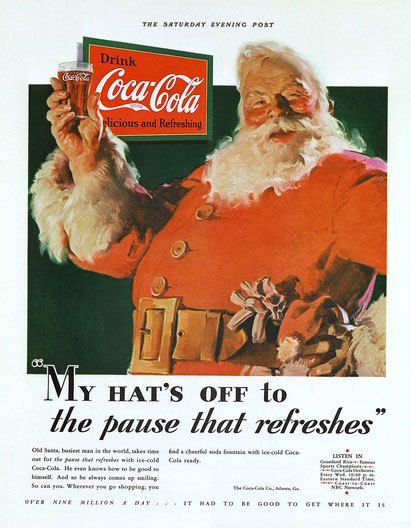| Membership | Price (+HST) |
|---|---|
| Single | $85/year |
| Single Plus | $120/year |
| Family | $130/year |
| Family Plus | $175/year |
| Contributing | $300/year |
| Supporting | $600/year |
| Sustaining | $1,000/year |
| Benefactor's Circle | $2,500/year |
| Director's Circle | $5,000/year |
| President's Circle | $10,000/year |
Fungi, Winter Solstice, and …Santa Claus?
By Alex Henderson, Curator of Living Collections, Royal Botanical Gardens
Did you know that the modern image of Santa Claus was devised as recently as 1931 during an advertising campaign illustrated by Haddon Sundblom? This was commissioned by Coca-Cola, who in a Christmas sales campaign wished to depict a wholesome Santa for magazines such as National Geographic, The New Yorker, and others. Whilst Sundblom’s illustrations are a twentieth century invention, the influence of Christmas imagery and seasonal colours has a much deeper history. It is likely that many modern Christmas traditions are based upon the mycological and ethnobotanical rituals of North European shamans during pagan celebrations of the winter solstice.


The shortest day of the year was revered by North European pre-Christian cultures as an annual tipping point. The transition from darkness and the return to light was a critical astronomical element in the worship of the natural world. To celebrate, shamans would collect mushrooms known as Fly Agaric (Amanita muscaria). These charismatic fungi, familiar from childhood folk tales have red caps, white scales, and stems. Found growing under conifer and birch trees, the hallucinogenic properties of A. muscaria when ingested is high so before consumption these fungi were dehydrated on pine branches. Could this ritual explain why gifts in red and white wrapping are placed under Christmas trees and why the branches are decorated with ornaments?

Fly agaric, Amanita muscaria
Many Christmas traditions celebrated today have a long mycological and ethnobotanical history. Holly, ivy and mistletoe, all modern botanical Christmas tropes, were venerated during pre-Christian winter solstice celebrations. As shamanic beliefs spread through Europe they were, with time, transitioned into Christian Christmas beliefs. The solstice celebrations of December 21st were shifted to December 25th and the fourth century Turkish bishop, Saint Nicholas of Bari, replaced the image of pagan shamans inspiring the modern figure of Santa Claus. The ancient rites of the winter solstice have been preserved and modified but the influence of Aminata muscaria remains present and perhaps has marked the history of the Christmas celebrations we all love today.
More from the RBG Blog
Check out RBG’s blog for announcements, articles, and more from Canada’s largest botanical garden.
Want to be sure you hear first? Sign up for our weekly e-newsletter to hear about upcoming events, weekend activities, articles, and more!












